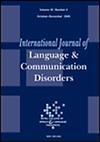Online Administration of Persian Diagnostic Aphasia Battery in Iranian People With Aphasia
Abstract
Background
Remote assessment through telehealth offers potential benefits for people with aphasia (PWA), particularly where in-person services are limited. However, its diagnostic validity in developing countries remains underexplored due to differences in infrastructure and digital literacy.
Aims
To compare in-person and remote administration of the Persian Diagnostic Aphasia Battery-2: Aphasia Quotient 2 (P-DAB2-AQ2) in Persian-speaking PWA and to examine participants’ technology use and satisfaction with remote assessment.
Methods
Twenty adults with mild to severe aphasia (mean age 55.85 years) completed the P-DAB2-AQ2 both in person and remotely via Skype. The test order was counterbalanced, and administration was conducted by two independent, blinded assessors. Intraclass correlation coefficients (ICCs) and Wilcoxon signed-rank tests were used to analyse score consistency across formats. Participants also completed surveys on prior technology use and satisfaction with remote assessment.
Results
ICCs indicated excellent agreement between in-person and remote AQ2 scores (0.986) and good to excellent agreement for subtests (0.834–0.981). No significant differences were found for individual subtests (p > 0.05), although the total AQ2 score was marginally higher for in-person assessments (p = 0.044). Connected speech showed the highest variability across formats, leading to aphasia type reclassification in four participants. Ten participants showed AQ2 differences > 5 points, primarily among those with severe aphasia. Despite 60% reporting low comfort with technology, 75% were satisfied with remote assessment, and no significant correlation was found between tech experience or satisfaction and performance.
Conclusions
Remote administration of the P-DAB2-AQ2 was reliable and comparable to in-person testing, supporting its clinical feasibility in Iran. However, variability in connected speech scores highlights the need for cautious interpretation. Further studies with larger samples are needed to optimize remote protocols and ensure broader applicability.
WHAT THIS PAPER ADDS
- Telehealth in speech-language pathology (SLP), particularly for aphasia assessment, has shown comparable results to in-person assessments in developed countries. However, challenges such as technological infrastructure and professional readiness hinder its widespread adoption in developing countries like Iran.
- This study is the first to compare in-person and remote administration of the Persian Diagnostic Aphasia Battery (P-DAB) in Persian-speaking people with aphasia (PWA). It provides detailed insights into the validity of remote assessments for each subtest, highlighting which areas are less reliable when administered remotely.
- The findings support the feasibility of using remote assessments to provide speech therapy services in Iran, potentially improving access to rehabilitation for PWA, especially in underserved and rural areas. This could lead to broader implementation of telehealth, ensuring timely intervention and improved quality of life for PWA.

 求助内容:
求助内容: 应助结果提醒方式:
应助结果提醒方式:


